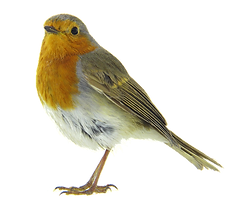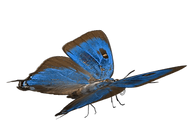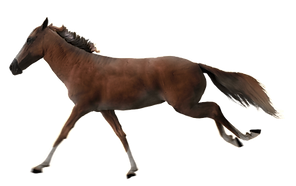ALEXA MERKENS
750 nm
420 nm
º <•)^))>{



RESEARCH
IN THE UV
Project Title: Circular Polarimetry of Chiral Biosignatures
PI: Dr. Charles Telesco
Institution and department: University of Florida Astronomy Department
Amount of time you have been affiliated with the project: Fall 2023-Present



My research proposal for this scholarship:
The understanding and classification of organisms as biotic is crucial to understanding the potential for life on other worlds. Prior research indicates that the presence of chirality, the predisposition to utilizing primarily right- or left-handed versions of molecules, in samples is a strong biosignature [1]. This net chirality of a sample can be detected with circularly polarized light. The Integrated Miniature Polarimeter and Spectrograph (IMPS) is an instrument utilizing spectroscopy to detect linear and circular polarization of light in organic samples. We aim to study chirality, its presence in biotic samples, factors contributing to its absence, and its variation across similar samples to determine further constraints for its use in astrobiology research.
There is a distinct lack of clarity in biology’s definition of what makes an organism “alive”. As such, one of the main missions of astrobiology research is in finding a more concrete understanding of the integral components to life. An abiotic sample containing a specific molecule generally has equal amounts of these two versions of the molecule, but organic samples exhibit a great excess of one over the other. A detected "imbalance" in the relative amounts of left and right-handed molecules (chirality) is a strong indicator that the sample is or was organic.
Our instrument, called an Integrated Miniature Polarimeter and Spectrograph (IMPS), examines the spectrum of light (e.g., sunlight or lab-lamp light) reflected or transmitted by a sample and determines if the interaction of the two has polarized the light. IMPS can detect a sample's circularly polarized absorption or transmission spectrum when light is shone through or onto the specimen, thereby potentially revealing a sample's chirality. IMPS is distinguished from other similar instruments by its compactness, extremely fine and precise resolution of data, and stationary parts. Other detectors typically utilize moving parts to detect circular polarization.
We currently have a working IMPS device for lab use, but are constructing a second, more compact model for use on satellites and spacecrafts to carry out remote sensing as part of the search for life on other worlds. Using IMPS, our lab is examining vegetation, blood, and other biotic samples as they become available to expand our understanding of what classifies organisms as “alive”. When certified, I will help to analyze blood samples of volunteers, prepare them for spectroscopy, reduce data, and follow appropriate lab safety protocols regarding blood handling. I currently do such with leaves and other vegetation.
In the past, our team has traveled to sites such as the hot springs in Yellowstone National Parks to study extremophile behavior, and we are currently trying to explore other microbial life in both the springs surrounding Gainesville and the Florida Keys. These experiences provide valuable insight on how IMPS can detect both easily accessible lifeforms and extremophiles in remote locations similar to those on planets with the potential to harbor life.
References:
1. Sparks, W. B., & Parenteau, M. N. (2021). Spectropolarimetry of Primitive Phototrophs as Global Surface Biosignatures. Astrobiology 10.1089/ast.2020.2272
